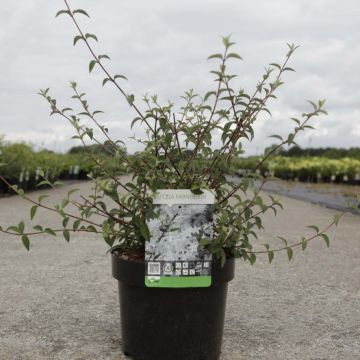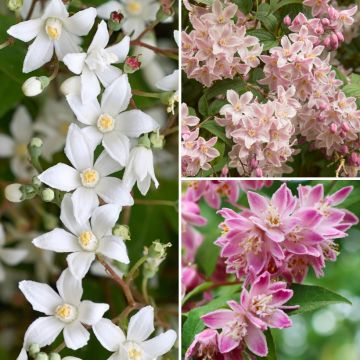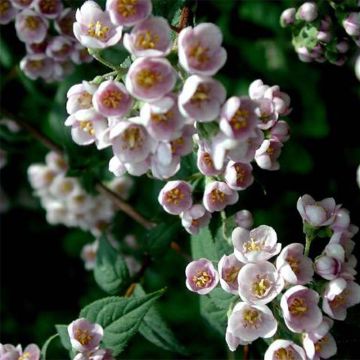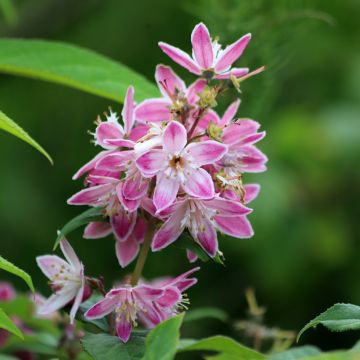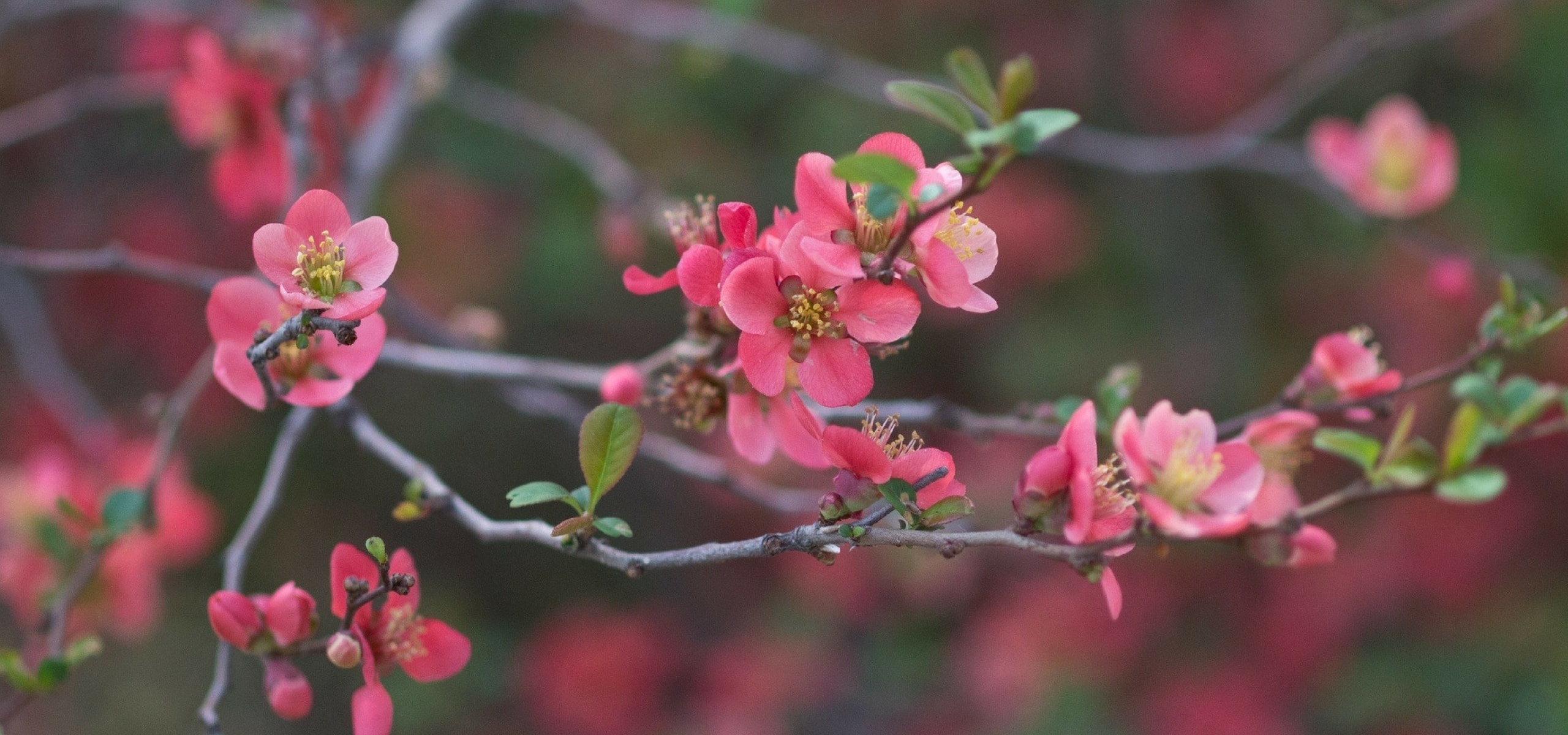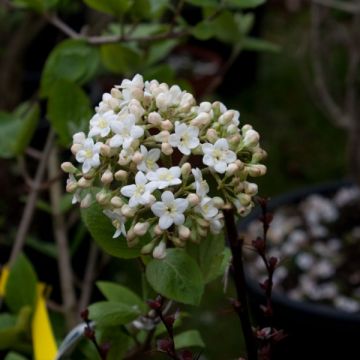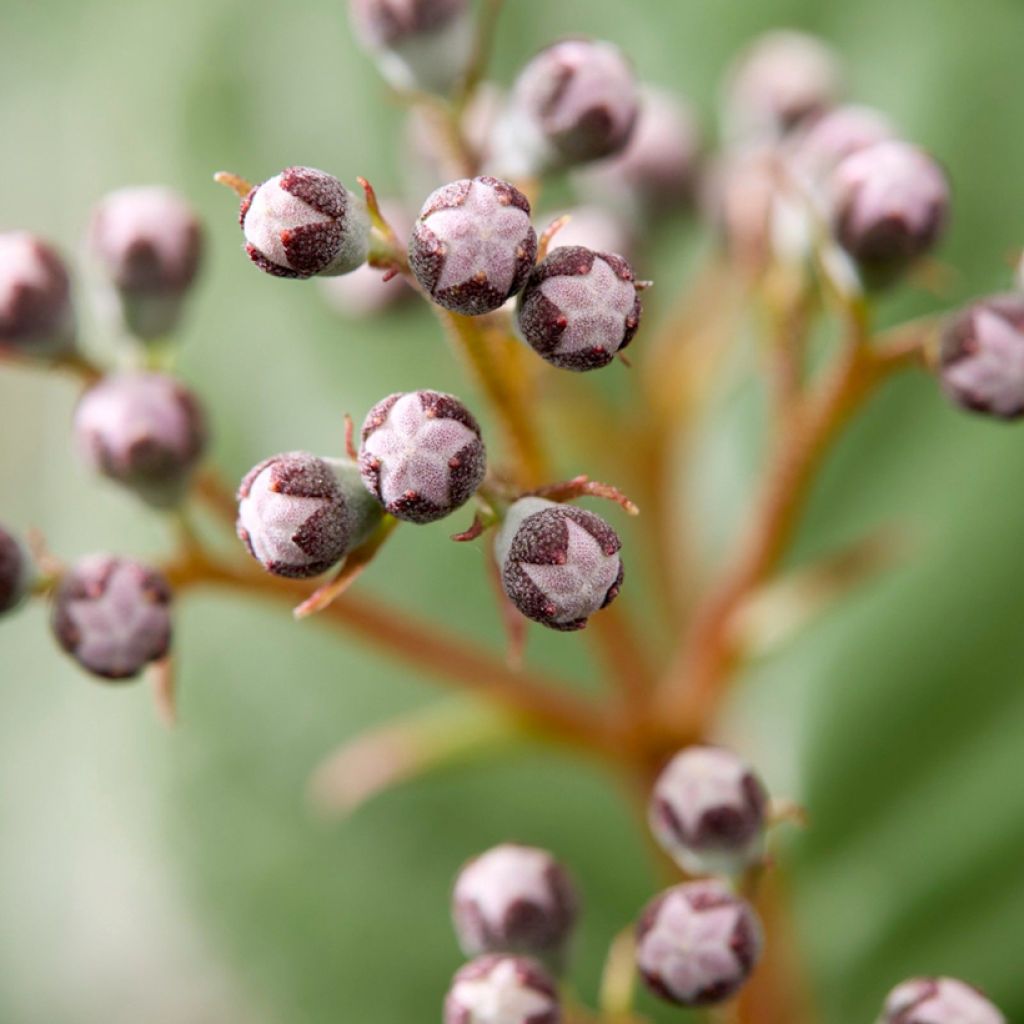

Deutzia Million Stars Pink Cloud


Deutzia Million Stars Pink Cloud
Deutzia Million Stars Pink Cloud
Deutzia x gracilis Pink Cloud
Japanese Snow Flower
Special offer!
Receive a €20 voucher for any order over €90 (excluding delivery costs, credit notes, and plastic-free options)!
1- Add your favorite plants to your cart.
2- Once you have reached €90, confirm your order (you can even choose the delivery date!).
3- As soon as your order is shipped, you will receive an email containing your voucher code, valid for 3 months (90 days).
Your voucher is unique and can only be used once, for any order with a minimum value of €20, excluding delivery costs.
Can be combined with other current offers, non-divisible and non-refundable.
Why not try an alternative variety in stock?
View all →This plant carries a 24 months recovery warranty
More information
We guarantee the quality of our plants for a full growing cycle, and will replace at our expense any plant that fails to recover under normal climatic and planting conditions.
Does this plant fit my garden?
Set up your Plantfit profile →
Description
Deutzia gracilis 'Million Stars Pink Cloud' is a very compact shrub with particularly charming flowering. It forms a dense clump as wide as it is tall, adorned with beautiful bright green foliage. From May, clusters of small star-shaped pinkish-white flowers begin to bloom profusely. The cut flower arrangements create a superb colour combination with the foliage, which they largely cover. The plant then transforms into a flowering ball, perfect for creating a stunning container display when planted in a pot to adorn a balcony or terrace. Appreciating partial sun or light shade, this graceful shrub grows in most soils that are not too dry, and is not susceptible to cold or diseases.
Deutzia, formerly classified among the Saxifragaceae, is now part of the small Hydrangea family, Hydrangeaceae. It shares this family with other ornamental genera, such as the popular Mock Oranges (Philadelphus), or the rarer Carpenteria californica, an evergreen Californian shrub with pretty white flowers resembling Japanese Anemones. The Deutzia genus includes about fifty species, mostly native to Southeast Asia, but also to Central America and Europe. Discovered in Japan in 1845, Deutzia gracilis forms a shrub reaching 70 cm in height, with bushy and upright growth, consisting of lanceolate leaves measuring 3 to 7 cm in length. The flowers, which measure 1.5 to 2 cm in diameter, are pure white and grouped in short, upright clusters, 4 to 8 cm long. This species was commonly forced in greenhouses in the past by horticulturists to produce flowers early. Today, it is more of a nursery plant intended for planting in borders, and it is also the origin of various hybrids.
Deutzia gracilis 'Million Stars® Pink Cloud' is a horticultural creation, even more compact than the botanical species. This dwarf Deutzia, reaching only 60 cm in all directions, forms a very dense clump, with a more or less spherical to spreading habit. It makes a good groundcover when planted in open ground and is ideally suited for decorative container cultivation, due to its limited growth and perfect tolerance to pruning. Its lanceolate, slightly toothed foliage fluctuates between a beautiful soft green when emerging and a bright green later. From May to June, clusters of twenty to thirty small pinkish-white to light pink flowers bloom on the plant. Measuring approximately 1.5 cm in diameter, the corollas, shaped like small cups, are formed of five pointed petals, giving them a starry appearance. Clustered closely together, the flowers form bunches about 5 cm in diameter that largely cover the vegetation.
Deutzia gracilis 'Million Stars® Pink Cloud' is a charming, easy-to-grow, very hardy shrub that adapts to most soils; it truly only dislikes overly dry conditions. It is a real gem for decorative container cultivation on a terrace or in a patio, and a blessing for small gardens, particularly urban ones. Thus, in a small space, you can create a scene of great beauty by combining it with other compact plants with staggered flowering times. For the start of the season, opt for Forsythia 'Marée d'Or', with a spreading, almost groundcover habit and not exceeding 80 cm in height. Its abundant, bright yellow flowering beautifully celebrates the beginning of spring. Spiraea japonica 'Magic Carpet', even more compact than your Deutzia, will take over with its raspberry pink flowering that begins in June and continues into summer. Its foliage colours with bronze, pinkish-orange, or yellow-green hues depending on the season. To create even more contrasts, plant a Weigela florida 'Minor Black', another dwarf shrub, whose purple foliage is adorned with purplish-pink flowers at the same time as the Deutzia, sometimes with a second flush in September.
Deutzia Million Stars Pink Cloud in pictures
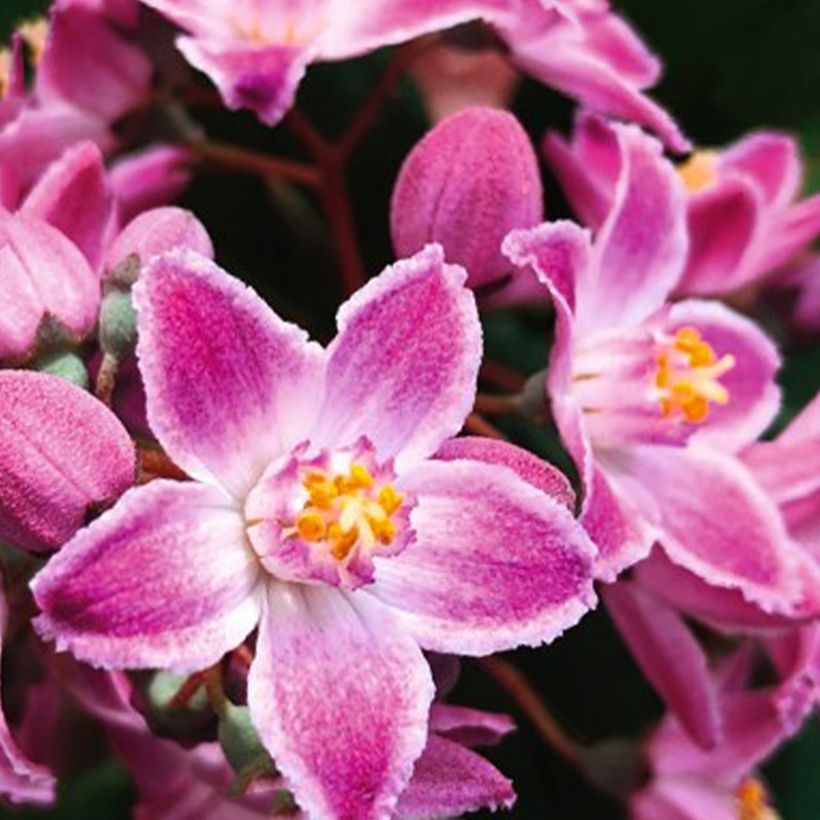

Plant habit
Flowering
Foliage
Botanical data
Deutzia
x gracilis
Pink Cloud
Hydrangeaeceae
Japanese Snow Flower
Cultivar or hybrid
Planting and care
Deutzia gracilis 'Million Stars Pink Cloud' is very easy to grow, as it is perfectly hardy (-20°C) and grows anywhere where the soil is deep and well-drained. It adapts to all types of ground, except those that are truly too dry, though it prefers fertile soils rich in humus that can retain some moisture. Plant in a sunny (but not scorching, as atmospheric dryness tends to brown the tips of the leaves) or partially shaded position between October and April, avoiding frost periods. It will need regular watering during the first two summers, particularly if the weather is hot and dry. It becomes quite drought-resistant with age and is not susceptible to diseases.
Each year after flowering, cut back the spent shoots just above a bud and as close as possible to the trunk. Remove 1/3 of the old shoots at their base to allow the plant to continually rejuvenate and thus remain bushy and floriferous.
Planting period
Intended location
Care
Planting & care advice
This item has not been reviewed yet - be the first to leave a review about it.
Similar products
Haven't found what you were looking for?
Hardiness is the lowest winter temperature a plant can endure without suffering serious damage or even dying. However, hardiness is affected by location (a sheltered area, such as a patio), protection (winter cover) and soil type (hardiness is improved by well-drained soil).

Photo Sharing Terms & Conditions
In order to encourage gardeners to interact and share their experiences, Promesse de fleurs offers various media enabling content to be uploaded onto its Site - in particular via the ‘Photo sharing’ module.
The User agrees to refrain from:
- Posting any content that is illegal, prejudicial, insulting, racist, inciteful to hatred, revisionist, contrary to public decency, that infringes on privacy or on the privacy rights of third parties, in particular the publicity rights of persons and goods, intellectual property rights, or the right to privacy.
- Submitting content on behalf of a third party;
- Impersonate the identity of a third party and/or publish any personal information about a third party;
In general, the User undertakes to refrain from any unethical behaviour.
All Content (in particular text, comments, files, images, photos, videos, creative works, etc.), which may be subject to property or intellectual property rights, image or other private rights, shall remain the property of the User, subject to the limited rights granted by the terms of the licence granted by Promesse de fleurs as stated below. Users are at liberty to publish or not to publish such Content on the Site, notably via the ‘Photo Sharing’ facility, and accept that this Content shall be made public and freely accessible, notably on the Internet.
Users further acknowledge, undertake to have ,and guarantee that they hold all necessary rights and permissions to publish such material on the Site, in particular with regard to the legislation in force pertaining to any privacy, property, intellectual property, image, or contractual rights, or rights of any other nature. By publishing such Content on the Site, Users acknowledge accepting full liability as publishers of the Content within the meaning of the law, and grant Promesse de fleurs, free of charge, an inclusive, worldwide licence for the said Content for the entire duration of its publication, including all reproduction, representation, up/downloading, displaying, performing, transmission, and storage rights.
Users also grant permission for their name to be linked to the Content and accept that this link may not always be made available.
By engaging in posting material, Users consent to their Content becoming automatically accessible on the Internet, in particular on other sites and/or blogs and/or web pages of the Promesse de fleurs site, including in particular social pages and the Promesse de fleurs catalogue.
Users may secure the removal of entrusted content free of charge by issuing a simple request via our contact form.
The flowering period indicated on our website applies to countries and regions located in USDA zone 8 (France, the United Kingdom, Ireland, the Netherlands, etc.)
It will vary according to where you live:
- In zones 9 to 10 (Italy, Spain, Greece, etc.), flowering will occur about 2 to 4 weeks earlier.
- In zones 6 to 7 (Germany, Poland, Slovenia, and lower mountainous regions), flowering will be delayed by 2 to 3 weeks.
- In zone 5 (Central Europe, Scandinavia), blooming will be delayed by 3 to 5 weeks.
In temperate climates, pruning of spring-flowering shrubs (forsythia, spireas, etc.) should be done just after flowering.
Pruning of summer-flowering shrubs (Indian Lilac, Perovskia, etc.) can be done in winter or spring.
In cold regions as well as with frost-sensitive plants, avoid pruning too early when severe frosts may still occur.
The planting period indicated on our website applies to countries and regions located in USDA zone 8 (France, United Kingdom, Ireland, Netherlands).
It will vary according to where you live:
- In Mediterranean zones (Marseille, Madrid, Milan, etc.), autumn and winter are the best planting periods.
- In continental zones (Strasbourg, Munich, Vienna, etc.), delay planting by 2 to 3 weeks in spring and bring it forward by 2 to 4 weeks in autumn.
- In mountainous regions (the Alps, Pyrenees, Carpathians, etc.), it is best to plant in late spring (May-June) or late summer (August-September).
The harvesting period indicated on our website applies to countries and regions in USDA zone 8 (France, England, Ireland, the Netherlands).
In colder areas (Scandinavia, Poland, Austria...) fruit and vegetable harvests are likely to be delayed by 3-4 weeks.
In warmer areas (Italy, Spain, Greece, etc.), harvesting will probably take place earlier, depending on weather conditions.
The sowing periods indicated on our website apply to countries and regions within USDA Zone 8 (France, UK, Ireland, Netherlands).
In colder areas (Scandinavia, Poland, Austria...), delay any outdoor sowing by 3-4 weeks, or sow under glass.
In warmer climes (Italy, Spain, Greece, etc.), bring outdoor sowing forward by a few weeks.































